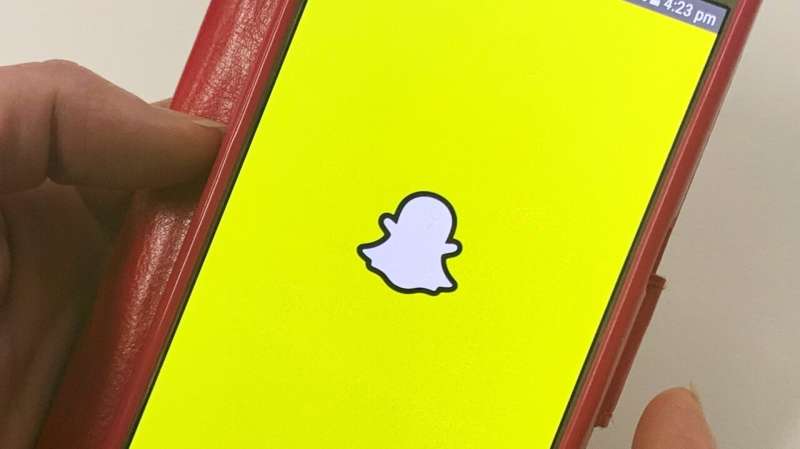Credit: Queensland University of Technology (QUT)
Snapchat has emerged as one of the surprise threats to Queensland drivers, with a new QUT study showing one in six young drivers surveyed had used Snapchat while behind the wheel.
Ph.D. researcher Verity Truelove, from QUT's Centre for Accident Research and Road Safety-Queensland (CARRS-Q), surveyed 503 Queensland drivers aged 17 to 25 about using the popular social media app on the road.
She found 16 percent of survey respondents confessed to using the Snapchat on their mobile phone when driving.
For a few, that use only involved looking at, or replying to, other people's messages. But 15 percent of those surveyed said they had used their phone to send a video or photo via Snapchat at the same time as controlling their vehicle.
"Of that 15 percent, more than half (58 percent) said their primary motivation was to immediately share a video or photo of something they had seen while they were driving," Ms Truelove said.
"The vast majority of these app users (71 percent) said they most commonly used it while stopped at a red light, but three percent said they most commonly used Snapchat while driving at any speed."
Ms Truelove said it was important to note that 84 percent of the surveyed drivers said they did not use Snapchat on the road, and only 12 percent thought it was acceptable behavior.
"But the majority of survey respondents (69 percent) said they knew of someone who did send videos or photos of Snapchat while driving," she said.
Australia has more than 6 million regular Snapchat users, including an estimated 2 million users aged 18 to 24. The app is regarded as the most popular social media platform for under 25s, and is slightly more popular with young men than young women. Unlike text-based Facebook, Snapchat is a multimedia messaging app that opens in mobile phone cameras to allow users to send captioned photos and videos seconds after they take them.
Ms Truelove's overall study aimed to investigate the types of social media most used by young people while driving, and also what was most likely to deter them from this behavior.
It included in-person focus groups with 60 drivers aged 17 to 25—which found Snapchat was overwhelmingly the most popular social media platform used in the car—followed by the larger survey.
"Looking across the survey and focus groups we conducted, a common theme was that the drivers who used Snapchat thought it was a relatively safe practice because they used it at times they perceived to be low risk, such as when they were stopped at traffic lights," she said.
"This is an encouraging result in some ways—and consistent with other QUT studies that have looked at wider phone use—as it indicates young drivers are trying to self-regulate their behavior and only use their phone in low-risk situations.
"Another common theme was that most young drivers did not think there was much chance of them being caught by police using their phones, which meant fines weren't much of a deterrence. They believed the restriction on hand-held phone use was difficult to enforce.
"But, interestingly, nine drivers in our focus groups mentioned hearing about world-first mobile phone detection camera technology in Australia that involves cameras positioned at a height and angle that can see through the windscreen and photograph drivers using mobile phones.
"The drivers we talked to saw this as a strong deterrent, knowing these types of cameras were 'out there' … even though they are only in New South Wales at this stage.
"Increases in perceptions that driver phone use is being monitored may result in increases in obeying the law. If people think there is a high chance they will be caught, they are more likely not to break the law.
"For some drivers though, safety concerns regarding being harmed or harming others were the biggest deterrents."
During the focus groups held as part of the study, many drivers shared anecdotes about their friends and themselves, with several citing Snapchat's speed filter (which identifies and superimposes the speed a vehicle is traveling over a photo).
Comments made at the focus groups included:
- I Snapchat and drive!
- Even my friend on her opens was Snapchatting while driving and she nearly killed us.
- I had a friend who was Snapchatting on like [X] road which is one of those country roads that are just like dead quiet and she crashed and she still Snapchats. Like how do you not learn your lesson from that?
- I think people do it to be cool because I know a girl who was doing 65 in a school zone and then she took a Snapchat of it. I was like are you trying to kill someone here. I think people do it for the Snapchat, like look at me speeding and using my phone.
- I think if you were going on social media you would only go on Snapchat, like you wouldn't go on Facebook or Instagram [participants laugh].
- Obviously if you know there's going to be cops there then you're not going to be on your phone.
- In the end I think legal is always the way to stop people because no one's really thinking oh I'm going to crash when I'm doing this.
- Well, legal is definitely there [as a deterrent] but I feel like for most people they [legal deterrents] are a lot lesser than the physical consequences.
The research is published in the October edition of the Accident Analysis & Prevention international journal.
More information: Verity Truelove et al. "I Snapchat and Drive!" A mixed methods approach examining Snapchat use while driving and deterrent perceptions among young adults, Accident Analysis & Prevention (2019). DOI: 10.1016/j.aap.2019.06.008
Provided by Queensland University of Technology























